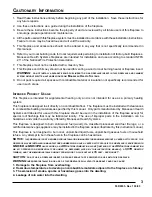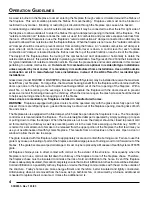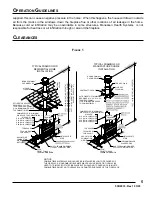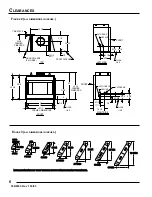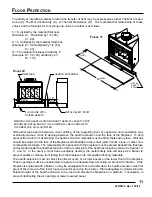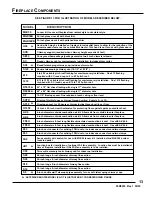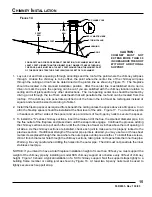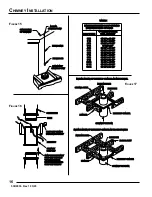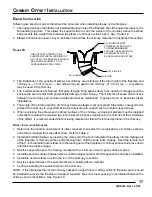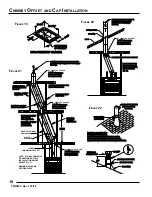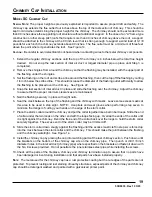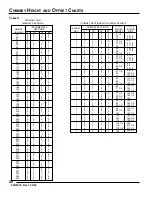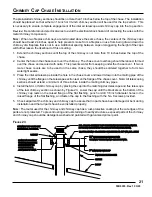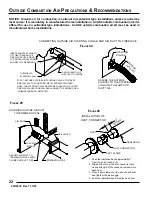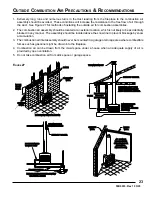
8
Survey the planned location for the fireplace for overhead plumbing or electrical wires, etc., that might complicate
the installation or endanger persons installing or cleaning the chimney. Avoid a location where the chimney
cap will be near abrupt changes in the roof shape, nearby wall or embankments, under or near trees or above
the roof of a single story wing of a two story building as shown by Figure 8. All these conditions can cause
turbulence or pressure conditions that can cause poor chimney draft and smoke spillage from the fireplace
opening. Elbows may be used to offset the chimney to avoid obstructions or to locate the chimney cap in a
preferred location. Refer to the sections of this manual pertaining to chimney offsets for instructions on proper
elbow use. Poor installation or location of the chimney cap and/or components can cause wind blown rain to
enter the chimney.
Be sure the selected location will allow a 14-1/2" square combustible material-free space for the chimney to
pass through. If the chimney is to pass through living or storage spaces, be sure there is adequate space to
enclose the chimney to avoid personal contact with, or damage to, the chimney. If the fireplace is to be
installed on an outside wall, the surrounding walls (chase) should be constructed and insulated as shown by
Figure 6. Failure to insulate the fireplace form outside temperatures will cause heat loss through and around
the fireplace.
I
NSTALLATION
P
REPARATION
CONTACTED BY FRAMING MATERIALS .
SCL TELESCOPING
CHIMNEY CAP
FLAT CHASE FLASHING
CHIMNEY SECTIONS
"S" SERIES
INSULATE OUTSIDE
WALLS OF CHASE
SOLID CONTINUOUS
SURFACE
INSULATION
(THERMAL BARRIERS)
OUTSIDE BASE
SF FIRESTOP SPACER
SEE NOTES
JOIST INSULATE SAME AS CEILING
SOLID
SURFACE
R3672 (36" x 72")
OR
R4884 (48" x 84")
8' 0"
LEVEL
NOTES:
1. MODEL SF FIRESTOP
SPACER MUST BE USED.
2. LOCAL CODES MAY NOT REQUIRE
FIRESTOPPING AT THE CEILING LEVEL
FOR CHASE INSTALLATIONS, BUT IT IS
RECOMMENDED FOR SAFETY AND
REDUCING HEAT LOSS.
3. DO NOT INSULATE THE CHASE WITH
BLOWN OR FILL TYPE INSULATION.
INSULATION SHOULD ONLY CONTACT
THE FIREPLACE AT POINTS WHERE
THE FIREPLACE WOULD NORMALLY BE
F
IGURE
6
53D9033. Rev 1 03/03



